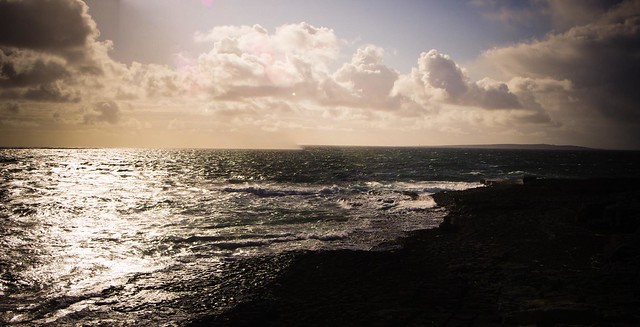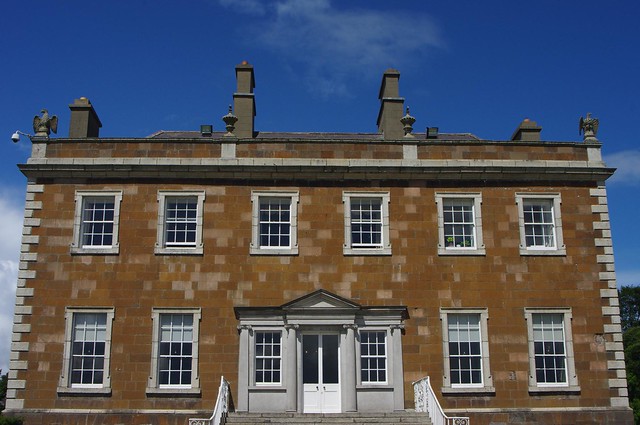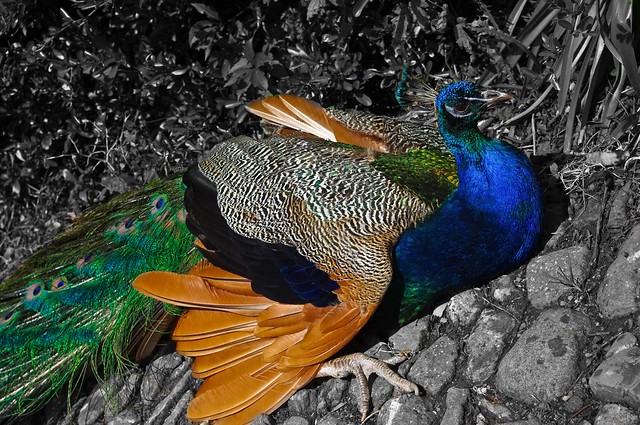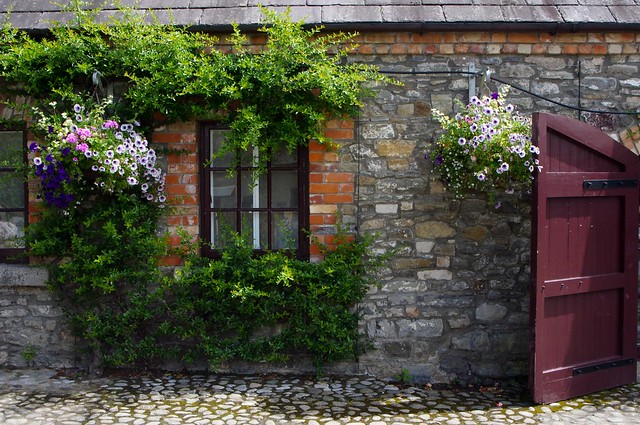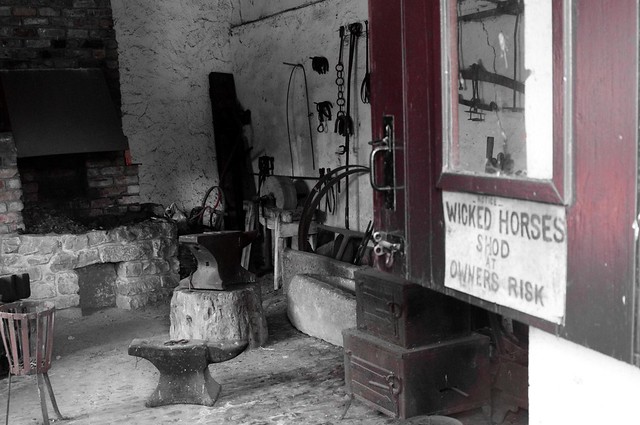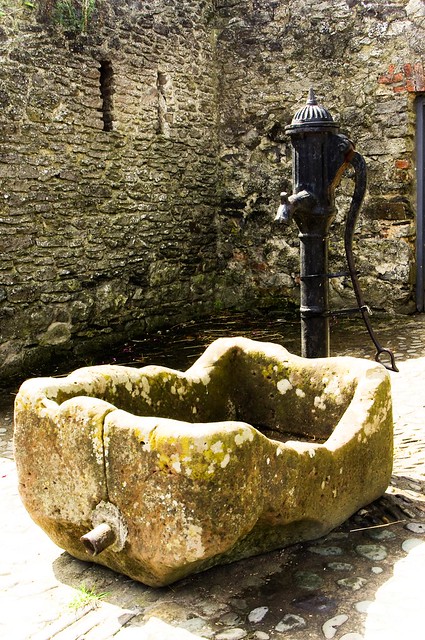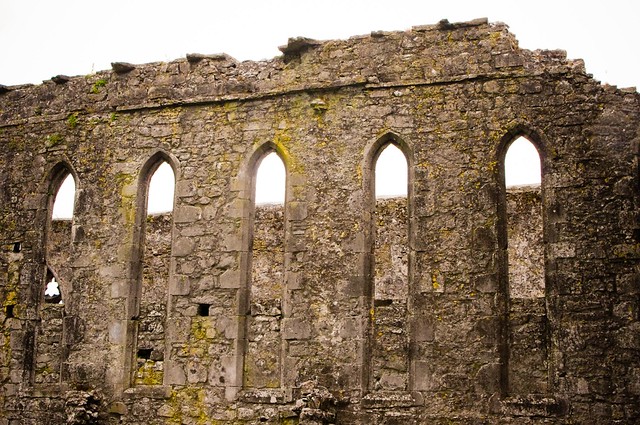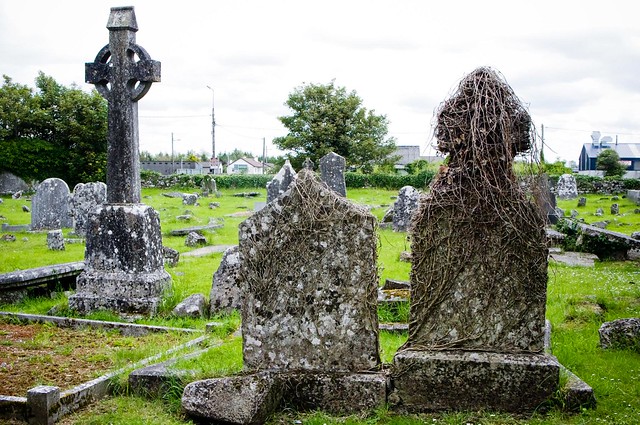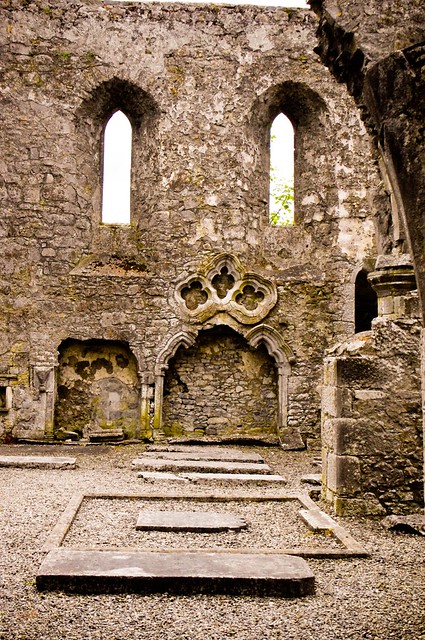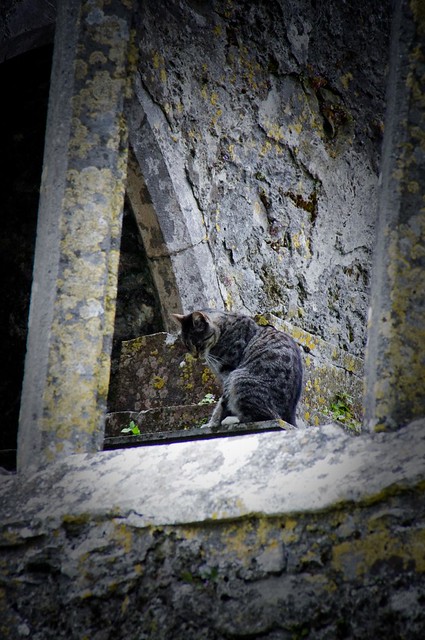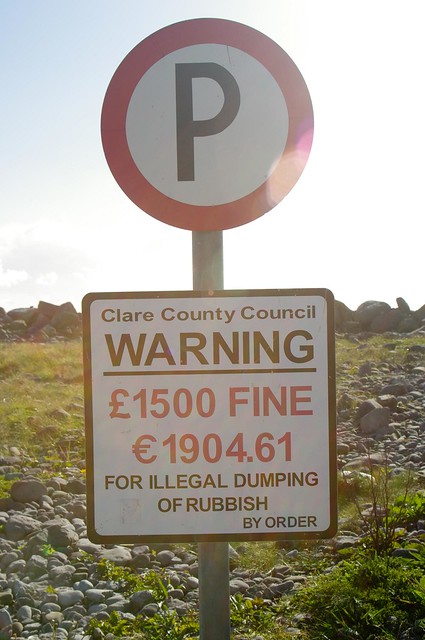
As we pulled in, I immediately started noticing the signs. There’s nothing in particularly strange about no parking signs, or signs that say you can’t walk the dog off leash – or that you have to clean up after the pets.
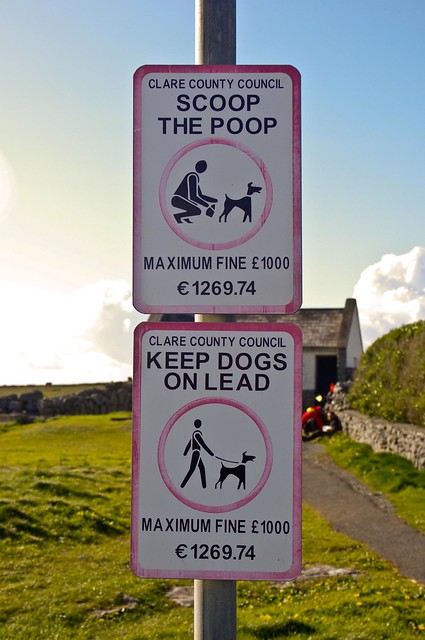
What caught my eye, however, is the fines. It’s the oddly random amounts – of the conversion from eg. 1000 pounds sterling to 1269.74 euros, and the 1500 Pound fine to 1904.61 euros that made me giggle. Really? 61 cents? These are clearly odd / slightly old signs since the region hasn’t been under the British Pounds in quite some time, but yet they’re not that old – because they have the conversion to Euros (what was the conversion rate)?

Once past the signs, I did quite enjoy the view from Doolin Harbour. In the distance, you can see the cliffs – and up close you can see the lovely grass and rocks as you head to the rocky beach.
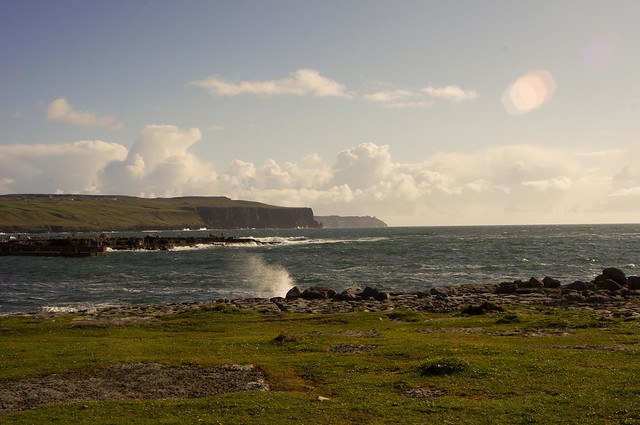
The tide was just coming in, which made for some interesting wave action. At the same time, though, the wind was blowing up a storm and the sun was setting – this made for an interesting challenge trying to get pictures.
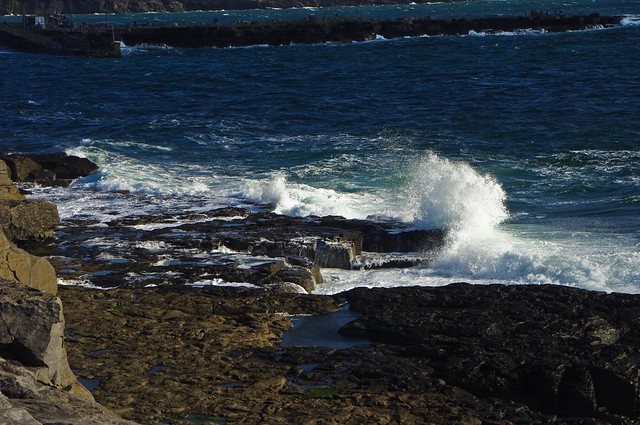
I got a couple nice silhouette shots of the guys watching the waves and the building down near the beach, paused for dinner, and then we all dashed back to the car before the rain.
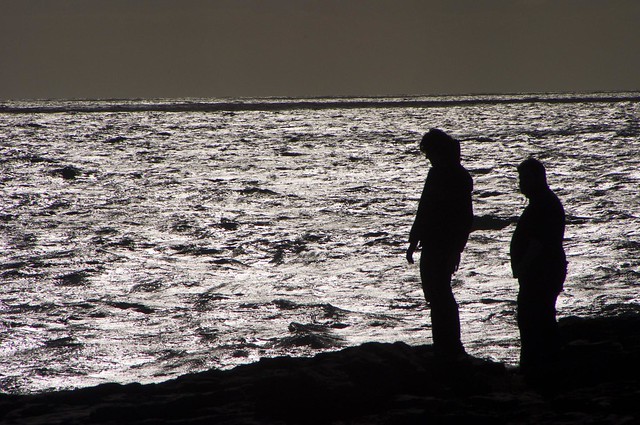
I think this is one place I’d like to come back to before I leave Ireland – hopefully I can get some nice weather and a couple more days off sometime soon.
